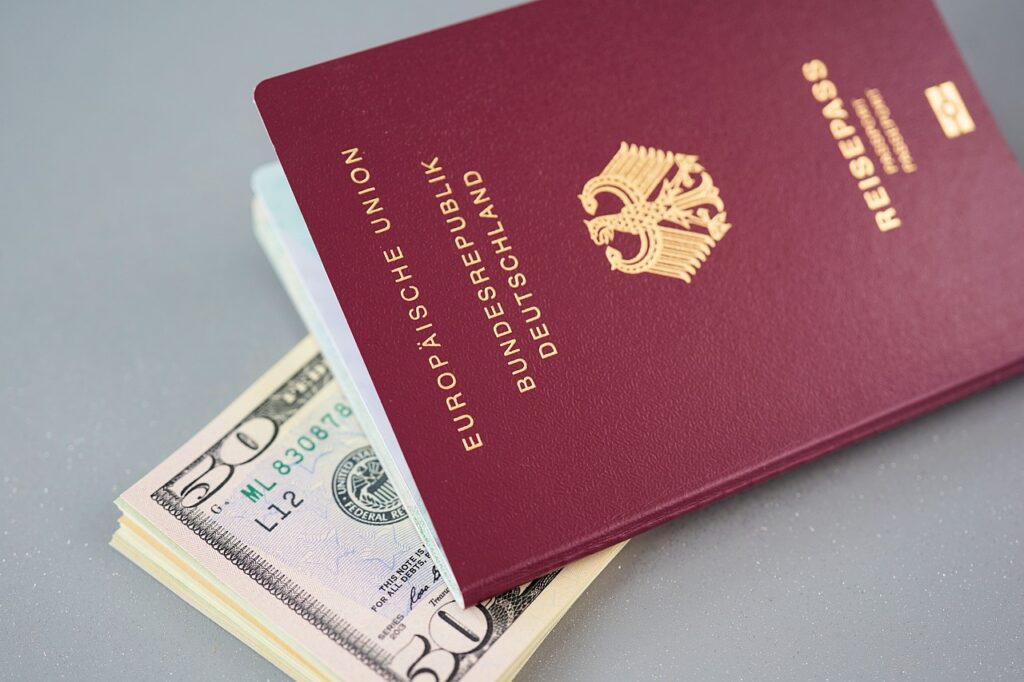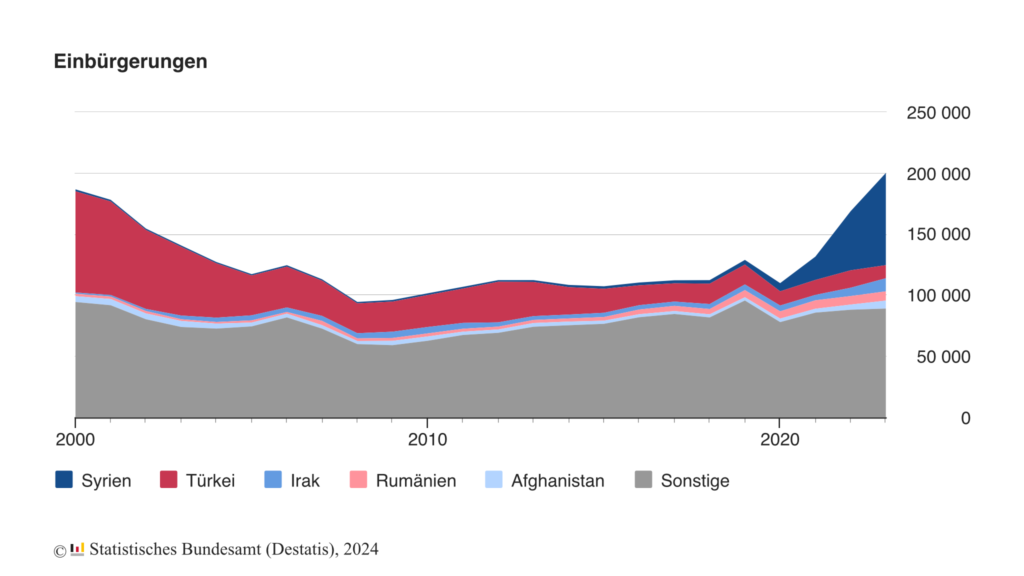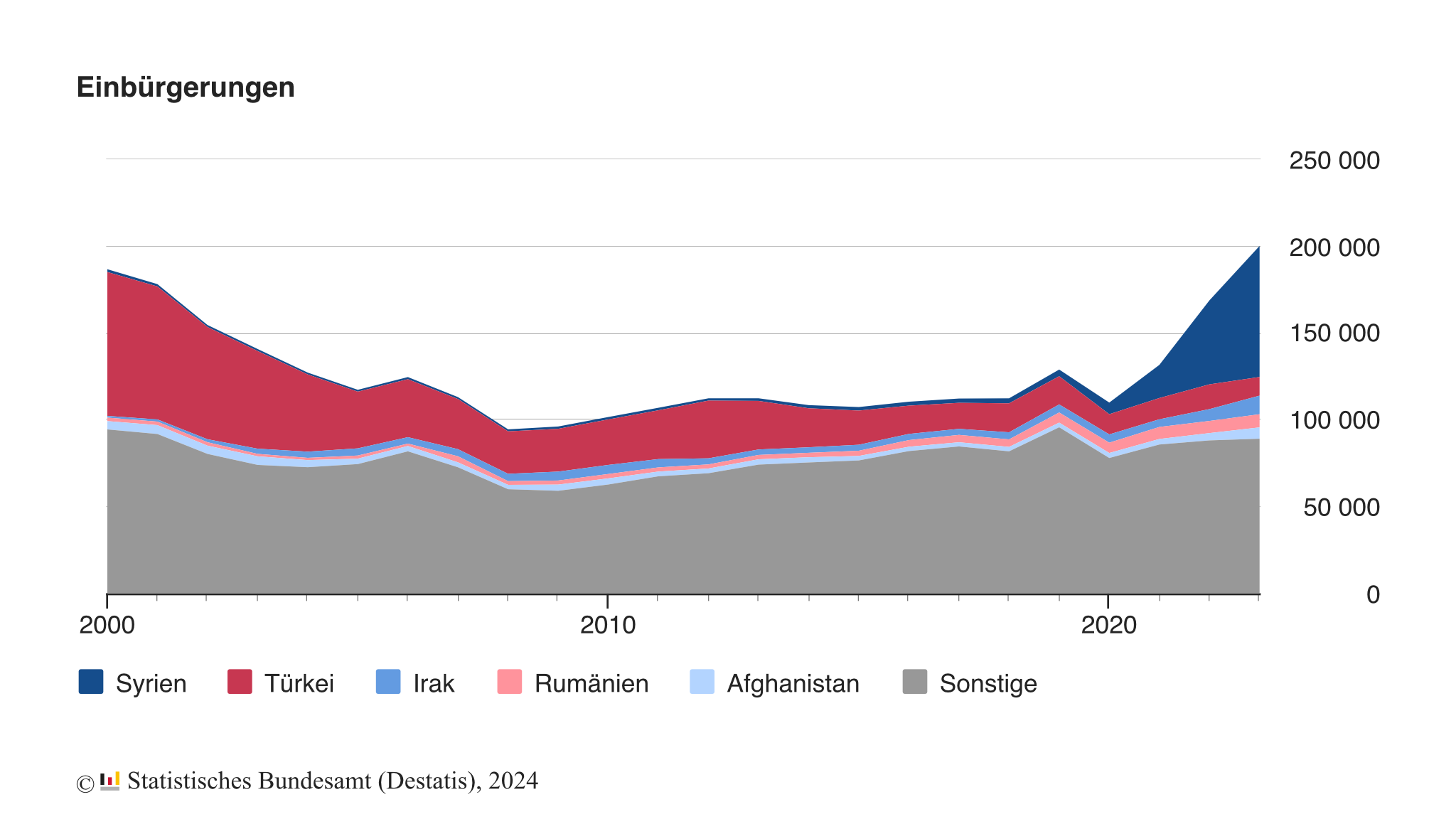
Introduction
The year 2023 witnessed a remarkable milestone in Germany’s history: the highest number of naturalizations since the turn of the millennium. A total of 200,100 foreign nationals became German citizens, surpassing all previous records. In this comprehensive blog post, we delve into the details of this trend, explore the contributing factors, and analyze the implications for society. Let’s unravel the story behind these numbers.
Graphical Representation

The Surge in Naturalizations
A Historic High
The surge in naturalizations in 2023 reflects a growing trend over the past few years. Compared to the previous year, the number of naturalizations increased by 31,000 (a significant 19% rise). This follows a substantial 28% increase in 2022. Clearly, more individuals are choosing to call Germany their home, and the reasons behind this phenomenon are multifaceted.
Diverse Origins
People from 157 different nationalities received German citizenship in 2023. Among them, Syrian nationals accounted for more than a third (38%) of all naturalizations. The top five represented nationalities—Syria, Turkey, Iraq, Romania, and Afghanistan—collectively contributed to over half (56%) of the total naturalizations. These diverse backgrounds enrich Germany’s cultural fabric and highlight its role as a welcoming nation.
Age and Gender
The average age of those granted citizenship was 29.3 years, significantly younger than the overall population’s average age of 44.6 years. Interestingly, the gender distribution among naturalized citizens differed slightly from the general population. While women constitute 50% of the total population, they accounted for 45% of the newly naturalized citizens.
The Syrian Connection
A Remarkable Spike
Syrian nationals dominated the naturalization landscape in 2023. A staggering 75,500 Syrians received German citizenship, marking a 56% increase compared to the previous year. This surge is part of a broader context—the influx of Syrian refugees between 2014 and 2016. Many of these individuals now meet the criteria for naturalization, including language proficiency and minimum residency duration. Additionally, spouses and minor children can be naturalized without meeting the minimum residency requirement, a provision that benefited approximately 28,000 (37%) of the newly naturalized Syrians.
Demographics
The average age of Syrian naturalized citizens was 24.5 years, and 64% of them were male. Before obtaining German citizenship, they had spent an average of 6.8 years in the country. This trend underscores the impact of the refugee crisis and the subsequent integration efforts.
Other Noteworthy Trends
Turkish and Iraqi Citizens
Turkish and Iraqi nationals constituted the second-largest group of naturalized citizens in 2023, with 10,700 naturalizations each. While Iraqi naturalizations increased by 57%, Turkish naturalizations declined by 25% compared to the previous year.
Romanian and Afghan Citizens
Romanian citizens saw an 8% increase in naturalizations, reaching 7,600. Afghan citizens also experienced a significant rise, with 6,500 naturalizations—an impressive 55% increase.
Ukrainian Citizens
Ukrainian naturalizations rose by 6%, totaling 5,900. This increase followed a nearly threefold surge from 2021 to 2022, driven by the Russian invasion of Ukraine. Ukrainian citizens accounted for 3% of all naturalizations in 2023.
Conclusion
The record-high naturalizations in 2023 reflect Germany’s commitment to inclusivity and integration. As the nation continues to welcome people from diverse backgrounds, it poses essential questions: How can we ensure successful integration? What policies can further facilitate this process? Let us celebrate this milestone while also considering the challenges and opportunities it presents.
Disclaimer: The data and analysis presented in this blog post are based on official statistics from the Statistisches Bundesamt (Destatis).
Did you find this post informative? Share your thoughts in the comments below!



